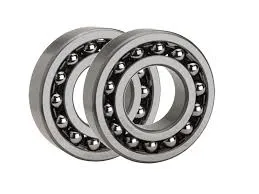
Dec . 03, 2024 14:47 Back to list
Understanding Tapered Roller Bearing Dimensions for Optimal Performance and Application
Understanding Taper Roller Bearing Sizes A Comprehensive Guide
Taper roller bearings are crucial components in various industrial applications, designed to support radial and axial loads simultaneously. These bearings consist of tapered inner and outer ring raceways, which allow for a higher load-carrying capacity than spherical bearings. Selecting the right size of taper roller bearing is vital for ensuring optimal performance and longevity of machinery. In this article, we will explore the factors that influence taper roller bearing sizes and how to determine the appropriate size for specific applications.
What is a Taper Roller Bearing?
A tapered roller bearing is characterized by its conical shape, which allows for the rolling elements (the rollers) to come into contact with both the inner and outer rings at a specific angle. This design ensures that the load is distributed evenly across the bearing's contact surface, enhancing its load capacity and stability. Taper roller bearings are commonly used in automotive applications, industrial machinery, and various equipment where high radial and axial loads occur.
Factors Affecting Taper Roller Bearing Size
1. Load Capacity One of the primary factors determining the size of a taper roller bearing is the load it must withstand. The bearing's load capacity is influenced by its dimensions, the number of rollers, and the materials used in its construction. It is essential to analyze both static and dynamic loads that the bearing will face during operation.
2. Speed The operating speed of the machinery is another crucial factor. Higher speeds can lead to increased heat generation and wear. Therefore, selecting a taper roller bearing size that can handle the required speed while maintaining operational efficiency is essential.
3. Application Requirements Different applications have unique requirements. For example, automotive wheel bearings, which experience both radial and axial loads, need to be carefully sized to ensure reliable performance. In contrast, bearings for industrial equipment may focus more on radial loads, requiring different size specifications.
4. Fit and Alignment The fit between the bearing and its housing is crucial for ensuring optimal performance. A snug fit helps prevent excessive play, which can lead to premature wear. The alignment of the bearing also plays a significant role in its performance, as misalignment can result in uneven load distribution.
taper roller bearing size

How to Determine the Right Taper Roller Bearing Size
When selecting a taper roller bearing size, follow these steps
1. Identify Application Requirements Begin by understanding the specific requirements of your application, including load types, speeds, and environmental conditions.
2. Consult Manufacturer Catalogs Most manufacturers provide detailed catalogs containing specifications for various taper roller bearings. These catalogs typically include dimensions, load ratings, and recommended applications. Use this information to compare different bearing sizes and models.
3. Calculate Load and Speed Ratings Utilize formulas and charts provided by manufacturers to evaluate the bearing's load and speed ratings. This step helps in determining whether the selected bearing size can handle the application’s demands.
4. Consider Operating Conditions Factors such as temperature, moisture, and contamination levels should also be taken into account. Bearings operating in harsh environments may require additional protection or sealing features.
5. Seek Professional Advice If uncertain about sizing, consulting with engineers or bearing specialists can provide valuable insights. They can help assess requirements and recommend suitable bearing sizes based on extensive experience.
Conclusion
Choosing the right size of taper roller bearing is essential for maximizing the efficiency and lifespan of machinery in which they are utilized. By considering load capacity, application requirements, speed, and operating conditions, you can make informed decisions when selecting taper roller bearings. With proper selection and maintenance, these bearings can significantly enhance operational performance, reduce downtime, and ultimately contribute to the success of various engineering applications.
Latest news
-
Premium Deep Groove Ball Bearings | High Speed & Reliability
NewsAug.29,2025
-
Durable Scaffolding Clamps - Secure & Reliable Tube Connectors
NewsAug.28,2025
-
Common Failures in Thrust Ball Bearings and Solutions
NewsAug.22,2025
-
How Tapered Roller Bearings Can Take Shock Loads
NewsAug.22,2025
-
Angular Bearings in High-Precision Spindles
NewsAug.22,2025
-
The Impact of Misalignment on Cylindrical Roller Bearing Performance
NewsAug.22,2025
